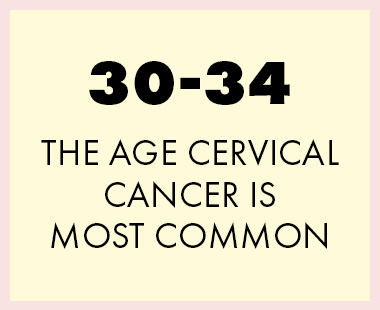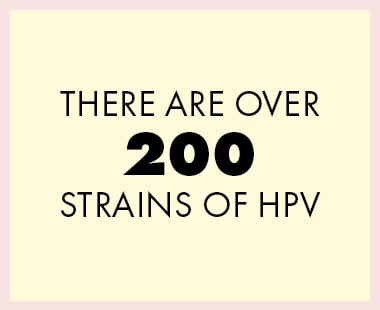March 2025 5 MIN READ
Cervical Cell Changes - What Do These Actually Mean?
Boux Avenue has teamed up with The Eve Appeal, the UK’s leading gynaecological cancer charity, to give you more information about what your cervical screening results letter means and what to expect at a colposcopy appointment.
You have received your results from a smear test - what do they mean?
Once you get a pap smear test, you will receive your cervical screening results in the post. Your letter will explain whether or not you have tested positive for human papillomavirus (HPV).
Most people (nearly 9 in 10) will be HPV negative. If your results are HPV negative then no HPV was found on your cervix. This means you have a very low risk of cervical cancer and no further action is required. You will be invited back for your next cervical screening in three or five years, depending on your age and where you live in the UK.
If your results do show as positive, don’t panic! Just over 1 in 10 women and people with a cervix will test positive for HPV. If HPV is found, your results letter will explain what will happen next. If they found HPV but no changes to the cells of your cervix, then you will be invited to another cervical screening test in one year’s time.
If your test finds HPV, your sample will be checked for cell changes (called dyskaryosis). These are not cancer, but could develop into cancer over time if not monitored or treated properly. If cell changes are found, you will be invited for a test to look more closely at your cervix. This test is called a colposcopy.
Sometimes the result will be ‘inadequate’ - this isn’t anything to worry about. It means the laboratory couldn’t get a HPV result or see if there were any cell changes from your sample. If your result was inadequate, you will be invited for another cervical screening test in three months, so they can take a new sample.
What are cervical cell changes?
Cervical cell changes (which can also be called abnormal cells or dyskaryosis) means there are some changes to the cells in your cervix. These are most likely caused by HPV, the common virus that causes nearly all cervical cancers.
IHPV is transmitted through skin-to-skin sexual contact. In most cases, it is cleared by the immune system without causing any issues. However, if HPV isn’t cleared, it can sometimes cause changes to the cervical cells.
Cervical cell changes are not cancer. They could turn into cancer if they are not monitored or treated, which is why it is important to attend your cervical screening appointments.
Key facts about cervical cell changes
- The most common type of cell change is called CIN (Cervical Intraepithelial Neoplasia).
- Other types of cell changes include CGIN (Cervical Glandular Intraepithelial Neoplasia) and SMILE (Stratified Mucin-producing Intraepithelial Lesion).
- If you have cell changes, you will be referred for a test called a colposcopy.
- Cell changes are not cancer, but can develop into cancer over time.
- Cell changes can go away on their own, but this gets less likely the higher grade they are.
- Cell changes will be monitored or treated.
What does CIN mean?
CIN is the most common type of cervical cell change. CIN is graded between 1-3. 1 is low grade, 2 and 3 are high grade cell changes.
The results of your colposcopy will tell you the type/stage of cell changes.
It is important to know none of these changes mean you have cancer. It is important they are monitored or treated to stop them turning into cancer in the future.
What does CGIN mean?
CGIN (Cervical Glandular Intraepithelial Neoplasia) is named after the parts of the cervix it affects, which are the glandular cells inside the cervical canal.
CGIN is usually described as either low grade or high grade.
As glandular cells are inside the cervical canal, they cannot be seen or monitored easily: If you have any grade of CGIN, you will be offered treatment.
It is important to know that CGIN is not cervical cancer. CGIN is a type of change to the cells. It can turn into cancer over time if it isn’t treated
What does SMILE mean?
CIN is the most common type of cell changes, with CGIN being the second most common. But there are other types of cell changes you can have, including SMILE.
SMILE is much rarer than CGIN but treated in a similar way.
CGIN and SMILE are usually treated by a procedure called a LLETZ (Large Loop Excision of the Transformation Zone). Your colposcopist will talk you through the best treatment options for you.
If you have questions about SMILE or CGIN you can speak to your colposcopist, or you can contact our Ask Eve Nurses for free and confidential advice.
How are cervical cell changes treated?
Cervical cell changes may need treatment. This is offered as a way to prevent them from possibly developing to a higher grade or into cervical cancer. The most common treatment is LLETZ - a type of surgery that removes a small part of the cervix.
How are cervical cell changes monitored?
Your colposcopy team may suggest your cervical cell changes are monitored instead of treated. This means you would be invited back for follow-up appointments at your GP surgery or the colposcopy department for repeat cervical screenings. Monitoring appointments usually happen every six months or every year, for a period of time, depending on the type and grade of cell changes. Monitoring is usually only recommended for CIN1 and sometimes CIN2.
Will cell changes develop into cervical cancer?
If you attend your cervical screening test when invited, and monitor or treat any cell changes, the risk of them developing into cervical cancer is low. Most cell changes do not develop into cervical cancer. Cervical cancer is just one of several gynaecological cancers – explore our other helpful guide on gynaecological cancers, created in partnership with The Eve Appeal, which also shares inspirational stories from those affected.
<How The Eve Appeal can help.
If you have any questions or worries about cervical screenings, cell changes, colposcopy or treatment, The Eve Appeal’s Ask Eve Nurses can help. You can speak to them for free and confidential advice and support by emailing nurse@eveappeal.org.uk, calling freephone 0808 802 0019, or visiting their website: EveAppeal.org.uk/AskEve.





































